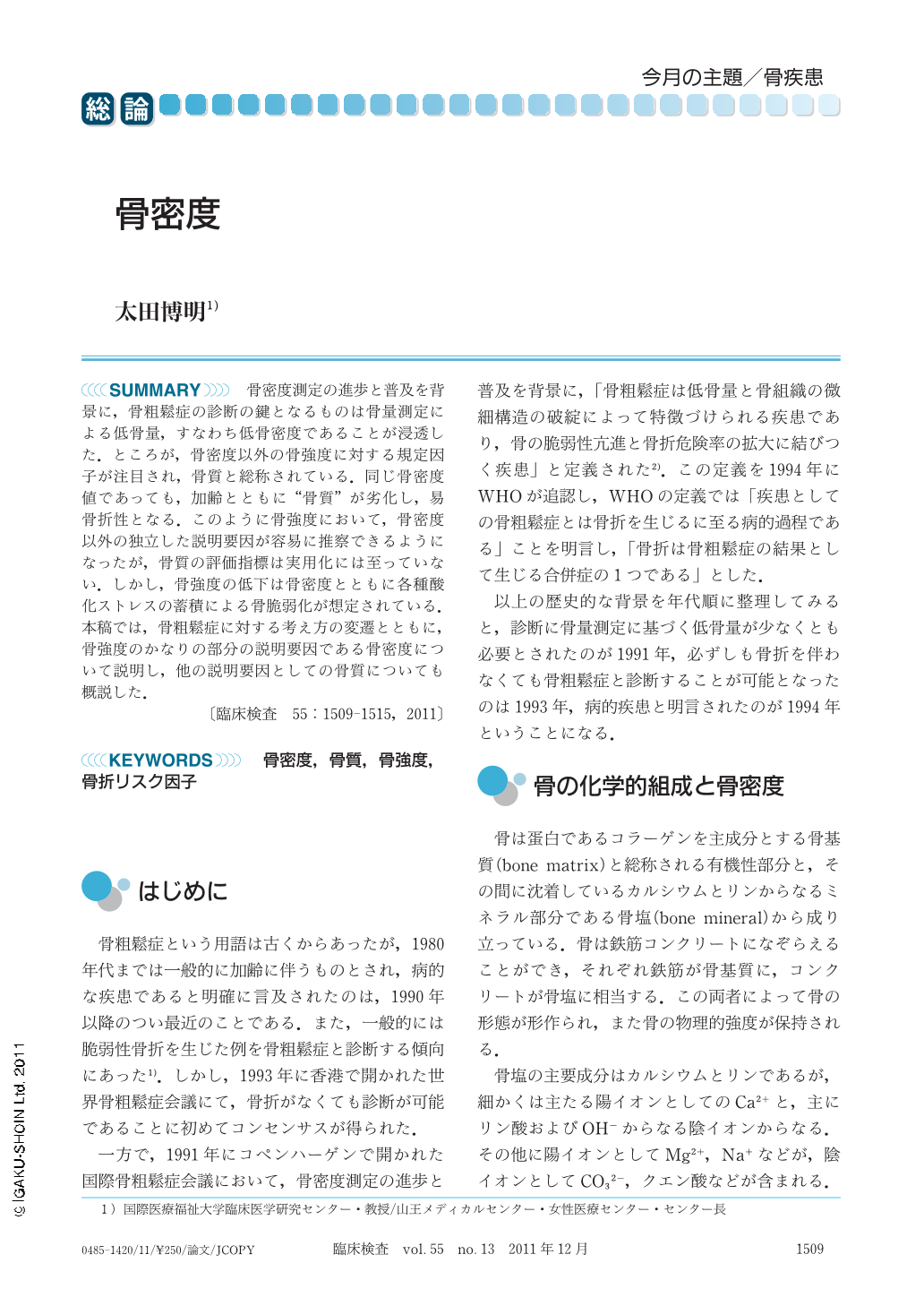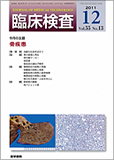Japanese
English
- 有料閲覧
- Abstract 文献概要
- 1ページ目 Look Inside
- 参考文献 Reference
骨密度測定の進歩と普及を背景に,骨粗鬆症の診断の鍵となるものは骨量測定による低骨量,すなわち低骨密度であることが浸透した.ところが,骨密度以外の骨強度に対する規定因子が注目され,骨質と総称されている.同じ骨密度値であっても,加齢とともに“骨質”が劣化し,易骨折性となる.このように骨強度において,骨密度以外の独立した説明要因が容易に推察できるようになったが,骨質の評価指標は実用化には至っていない.しかし,骨強度の低下は骨密度とともに各種酸化ストレスの蓄積による骨脆弱化が想定されている.本稿では,骨粗鬆症に対する考え方の変遷とともに,骨強度のかなりの部分の説明要因である骨密度について説明し,他の説明要因としての骨質についても概説した.
In osteoporosis management, low mineral bone density (BMD) as measured by bone densitometry has become the hallmark diagnosis of osteoporosis, thanks to technical advances in its measurement as well as due to its widespread use. In recent years, however, other determinant factors have attracted attention as accounting for bone strength together with BMD, and have come to be collectively termed "bone quality". In osteoporosis, "bone quality" deteriorates with increasing age, regardless of BMD, thus making affected individuals more and more susceptible to bone fracture. Thus, while, in addition to BMD, these other independent factors are also assumed to account for bone strength, no "bone quality" indices have become available for clinical use. The current hypothesis behind this is that decreases in bone strength may be accounted for by not only decreases in BMD but also by an accumulation of cellular and tissue damage caused by oxidative stress, both of which lead to bone fragility. This article reviews the changes in the concept of osteoporosis, focuses attention on BMD as one major determinant factor that largely accounts for bone strength, and goes on to describe bone quality as the other determinant factor for bone strength.

Copyright © 2011, Igaku-Shoin Ltd. All rights reserved.


